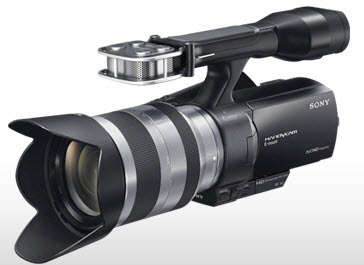Videomaker Article
Spooky Effects
by Contributor •
Spooky Effects by Peter Ross, October 2012
This article gives cheap and good idea for making people squirm in their seat while watching. There are many different effect that they talk about in the article. The effects are the broken bone effect when you have someone where a long sleeve shirt and put a bottle in it but cut of the top and put a branch inside of it, when the person goes to break it, the bottle and stick will snap giving the sound of a broken bone and the look too. Another effect is the Radiating power effect where you take a glow stick and put it i your hand and then cover it up and it looks like your hand has some sort of pulsing power. I learned many new ways to give the creepy effects and make people jump from their seats. I can use this when I am making my horror movie for my final and literally break a leg!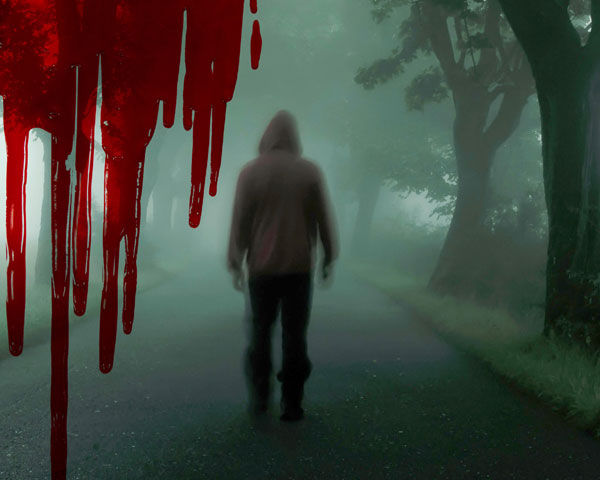
Videomaker Article
Reviews on the Car Mount
by Contributor •
 This article ” Matthews PRO Mount System Car Mount” by Colin Marks teaches us about how to use mounts for camera and how to make effective use of these mounts to produce quality products.The mounts usually way about 7lbs and can stand about 26lbs. the car mount system comes with suction cups that attach to the vehicle and allows you to get close/hug the tire to get a cool view for your product. Along with other camera products this article tells us to have safety straps and to use them effectively because the equipment is not cheap and could cause trouble if broken. From this article i learned how to use other ways of holding the camera without a tripod and still get an effective shot for my video. I can apply this new technique to films by attempting to use car mounts for chase scenes or for a car point of view.
This article ” Matthews PRO Mount System Car Mount” by Colin Marks teaches us about how to use mounts for camera and how to make effective use of these mounts to produce quality products.The mounts usually way about 7lbs and can stand about 26lbs. the car mount system comes with suction cups that attach to the vehicle and allows you to get close/hug the tire to get a cool view for your product. Along with other camera products this article tells us to have safety straps and to use them effectively because the equipment is not cheap and could cause trouble if broken. From this article i learned how to use other ways of holding the camera without a tripod and still get an effective shot for my video. I can apply this new technique to films by attempting to use car mounts for chase scenes or for a car point of view.
Uncategorized
Sony NEX-VG20H Interchangeable Lens Camera Review
by Contributor •
You can read about the sony NEX-VG20H interchangeable lens here. This is a compact video camera that you can grab if you want to shoot high quality on the go. With a 3-inch viewfinder that has 6 helpful bottons; iris, playback, shutter speed, display, program AE, and finder/LCD. When shooting people, their skin tones stay true to life and wrinkles are crisp and clear. There are many lenses that will work with this camera. The only mic on the camera is the 5.1 onboard mic which picks up a lot of sound from the surrounding environment. There are three options in the audio menu: wind noise reduction, audio mode, and audio record level. You can also change between a 5.1 channel surround and the 2 channel stereo. There is a jack for headphones and jack for an 1/8-inch mic which is a stereo.
This very light, 2.9lbs., camera would be very helpful to students that are filming on the go, not still video. The small size would fit great in students hands. I would love to use this camera in class.
Andy Scheblein | May 2012
Videomaker Article
Diva-lite
by Shaw •
The article I just read was about the diva-lite. The diva-lite is a light that only runs on 2 amps of power. The diva-lite is easy and quick to set up. The diva-lite displays both day light and tungsten cool light as bright as a 1,000 watt hot light.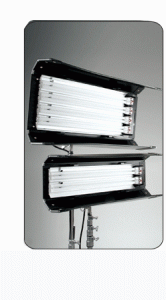
This article taught me about a light that only uses 2 amps
this light can help this class in flims
Uncategorized, Videomaker Article
Glidecam
by Shaw •
The article I previously read was about a stabilizer that can change your shaky and hard to watch footage into smooth, and professional footage
I learned that there a stabilizer that you can hold and still get great footage 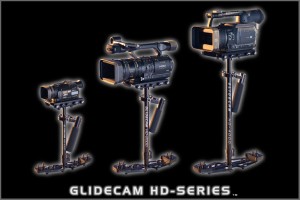
This stabilizer would definitely help our class with getting great footage in spots where a tripod couldn’t go
Uncategorized
Making Dope Sci-Fi Sound Effects
by Contributor •
In all the great sci-fi movies are unique and good quality sound effects. Sound effects that had to be created by house hold materials in some cases. For example in Star Wars IV: A New Hope, did you know that the famous gun blaster sound in the film was created by the head sound designer when he was out on a hike with his family? He had bumped into the guywires of a radio tower and it made this sound(http://www.youtube.com/watch?v=uLRPGFIl0Bs).
Sounds are everywhere, especially sci-fi sounds. Go outside one day and just listen. You will be amazed at the provocative sounds you hear or even in your house. But, don’t forget your sound equipment! Get everything on your mic and review the footage later. You will hear some amazing pieces of audio to put into your sci-fi flick and the best part of all is that these sounds are free!
Now, of course not every single sci-fi movie used everyday sounds for their picture. Star  Trek got their sounds strictly with synthesizers. These synthesizers had many different levels of sound and made the sound effects quite interesting. Sometimes they were creepy, sometimes they were just plain weird. Today we have computers and what not to generate sound effects, but anyways those are the two schools of thought on sci-fi sound effects.
Trek got their sounds strictly with synthesizers. These synthesizers had many different levels of sound and made the sound effects quite interesting. Sometimes they were creepy, sometimes they were just plain weird. Today we have computers and what not to generate sound effects, but anyways those are the two schools of thought on sci-fi sound effects.
I learned that almost all sound effects in Star Wars were made from everyday things in our world!
link to article:http://www.videomaker.com/article/15352/
Videomaker Article
Adobe After Effects
by Contributor •
In the article I recently read it give easy steps on how to use Adobe After Effects. Adobe After Effects is a editing program in which you use to add effects to the film that has recently been filmed. It is used to produce motion graphics.
In the tutorial, it talks about 12 basic steps you need to take to be able to make a special effect of some sort in your movie. With this editing program you’re able to produce a great piece of work without having to edit each object. Say
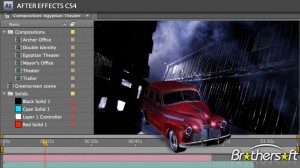
you have a flock of birds. In other editing softwares you would need to animate each bird but with Adobe you only have to animate one to make it work.
This is a great software to use, it was very easy to learn and works great. I suggest this software to other people trying to animate things. I have had the opportunity to use Adobe and it was very easy to get used to.
Uncategorized
Documentary Storytelling Techniques
by Contributor •
Julie Babcock | September 28th, 2011
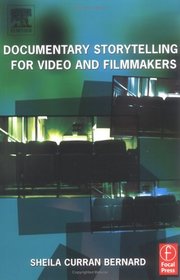 This article is about how to perfect how you tell your documentary. By watching other filmmakers you can greatly improve your skill. If you closely examine others, you can use some of there styles. If you consider factors like character development, music and editing decisions. No matter which documentary genre you’re interested in, there are plenty of sources to learn from. By examining different types and styles of documentaries, you’ll find a storytelling technique that works for you.
This article is about how to perfect how you tell your documentary. By watching other filmmakers you can greatly improve your skill. If you closely examine others, you can use some of there styles. If you consider factors like character development, music and editing decisions. No matter which documentary genre you’re interested in, there are plenty of sources to learn from. By examining different types and styles of documentaries, you’ll find a storytelling technique that works for you.
I learned that you don’t always have to use a completely new idea. You can use ideas from someone else. I’m definitely going use this when I’m making my documentary.
Uncategorized
Making Documentary Videos: The Interview
by Contributor •
 So the article that I read was about how to make an interview in a documentary look/be great. Before starting the interview you should gently prepare your subjects by telling them the general focus of the documentary. You should also not give your subjects the questions ahead of time. During the interview, the camera operator should listen intently to the questions/answers and adjusts the shots to emphasize the emotions of the moment.
So the article that I read was about how to make an interview in a documentary look/be great. Before starting the interview you should gently prepare your subjects by telling them the general focus of the documentary. You should also not give your subjects the questions ahead of time. During the interview, the camera operator should listen intently to the questions/answers and adjusts the shots to emphasize the emotions of the moment.
Another good thing to do is interview your subjects in a natural environment. You shouldn’t film all of your interviews in the same place. By changing up the environment, you can change the emotions of the interviewee. You should also choose a place with little to none background noise. If there is too much noise, you might not be able to do a voice-over interview.
Talk to your subjects to engage them and make them comfortable with talking to you, when you and your crew (if you have one) are setting up. You want to make your subject comfortable talking to you so they aren’t as tense during the interview. When you are asking the questions you should stand right beside the lens. You may not be comfortable, but your shot will look great. When ready for the interview, your subject can look you in the eye and you just have a conversation. You want your subject to answer your questions in complete statements, and have them repeat some of the question when they are answering if you want to do a voice-over.
I learned in this article that interviews are a very important part of a documentary depending on the subject. Also that you should start with the easiest questions first so you don’t get your subject nervous with your first questions. You should also not always stick to the script, if your subject says something in an answer that you want to know more about you should ask about it, and at the end you should ask if there is anything that you missed that they would like to talk about.
This will come in handy during class because in video 2 we need to make a documentary, and I know that I want to interview a handful of people and it would be great to use these tips.
Dr. Robert G. Nulph | April 2006

